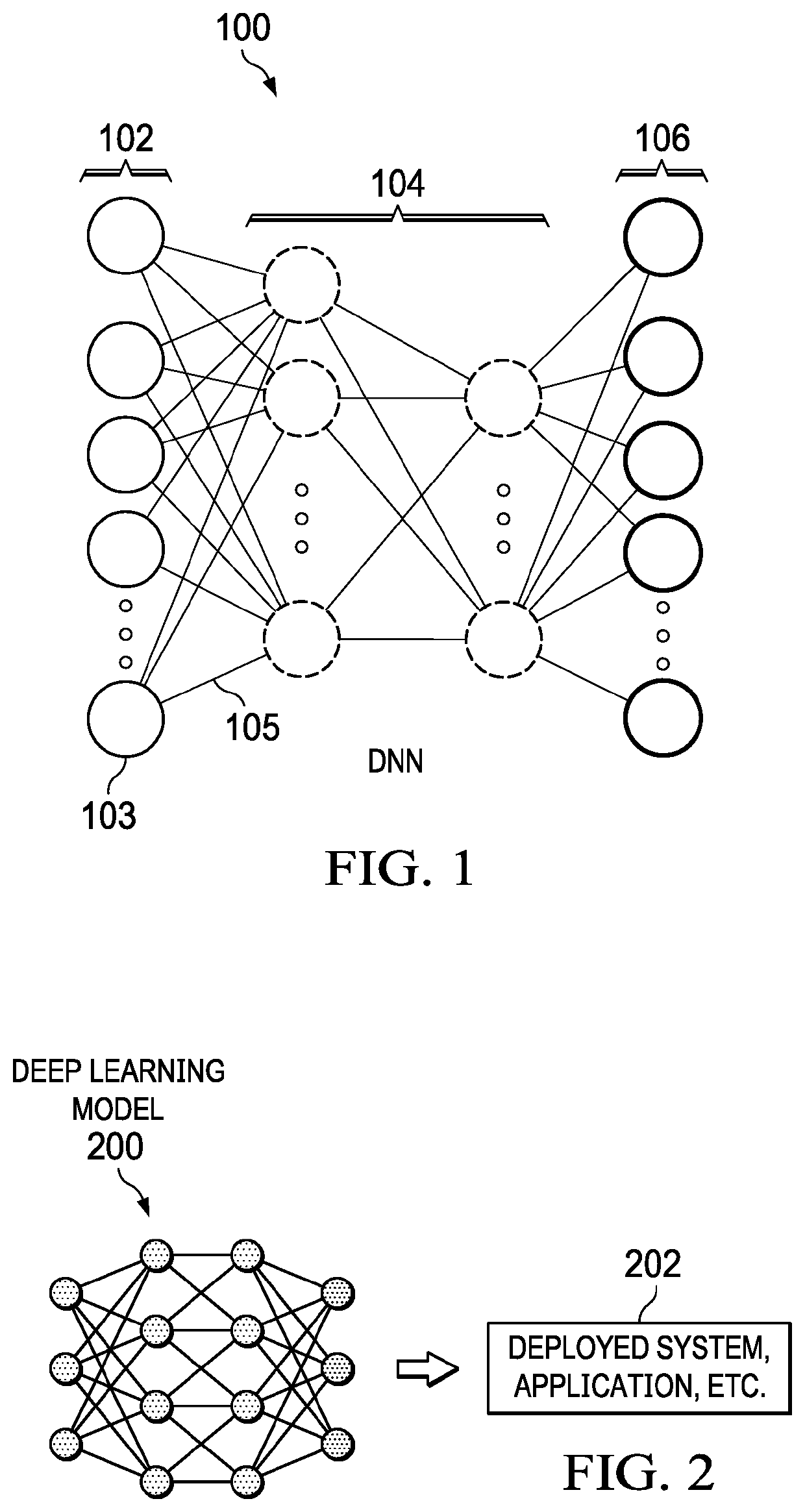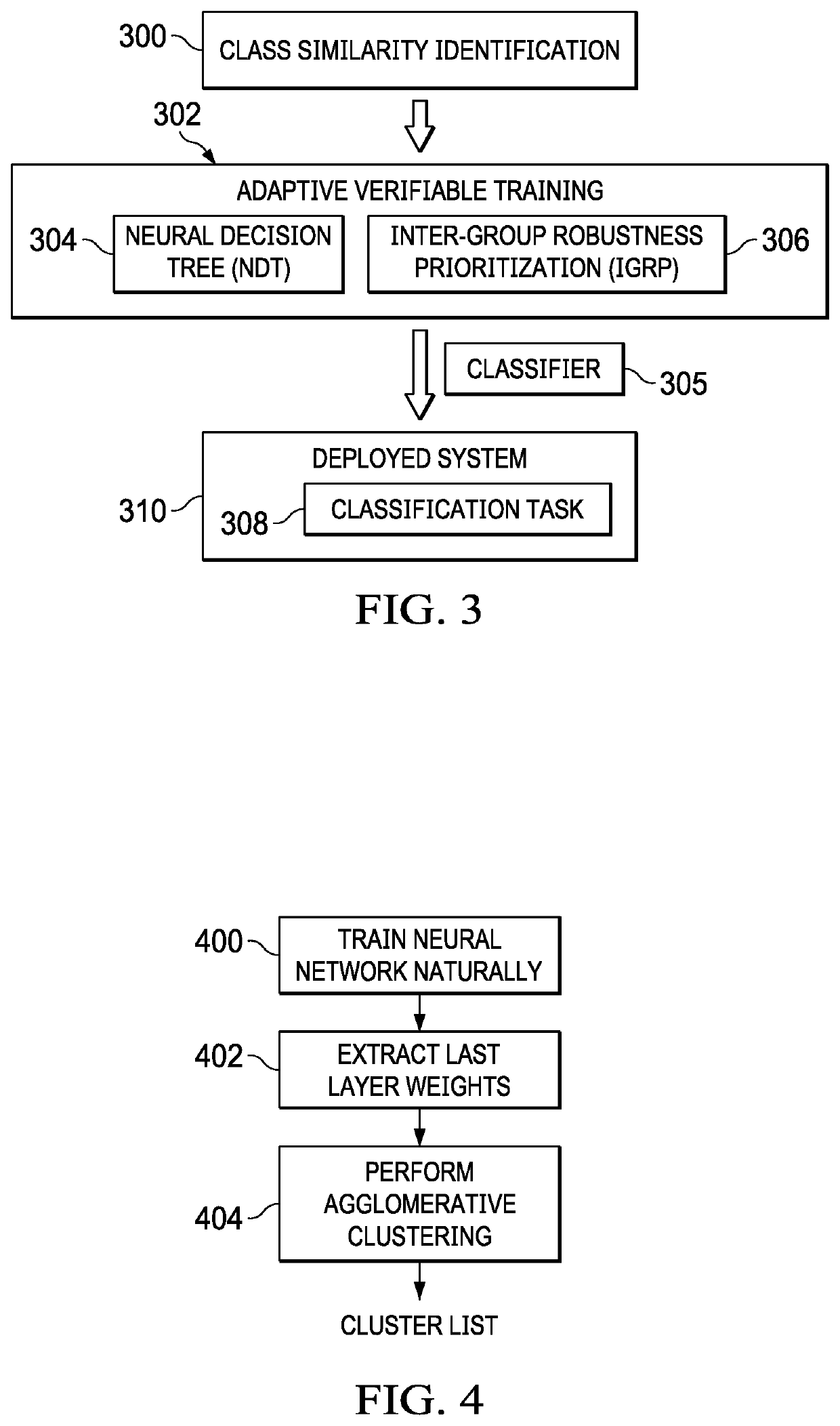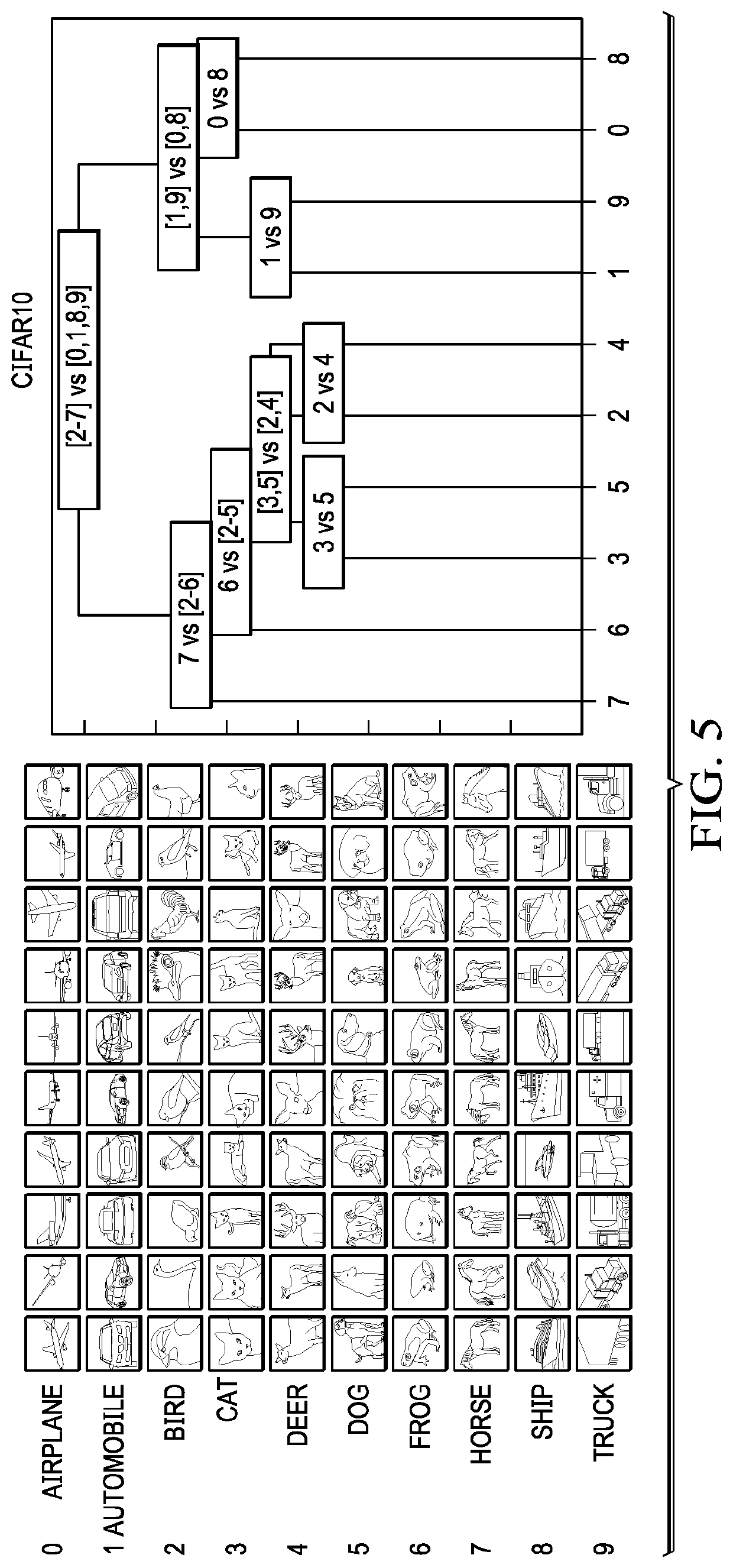Adaptive robustness certification against adversarial examples
a robustness and adaptive technology, applied in the field of information security, can solve problems such as classifiers not being able to perceive objects, models are vulnerable to adversarial attacks, and multiple trial-and-error iterations, and achieve the effect of minimizing possible overlap
- Summary
- Abstract
- Description
- Claims
- Application Information
AI Technical Summary
Benefits of technology
Problems solved by technology
Method used
Image
Examples
Embodiment Construction
[0022]As will be seen, the technique herein provides for enhancing the robustness of a neural network against adversarial attack. By way of background, the following provides basic principles of deep learning.
[0023]As is well-known, deep learning is a type of machine learning framework that automatically learns hierarchical data representation from training data without the need to handcraft feature representation. Deep learning methods are based on learning architectures called deep neural networks (DNNs), which are composed of many basic neural network units such as linear perceptrons, convolutions and non-linear activation functions. Theses network units are organized as layers (from a few to more than a thousand), and they are trained directly from the raw data to recognize complicated concepts. Lower network layers often correspond with low-level features (e.g., in image recognition, such as corners and edges of images), while the higher layers typically correspond with high-le...
PUM
 Login to View More
Login to View More Abstract
Description
Claims
Application Information
 Login to View More
Login to View More - R&D
- Intellectual Property
- Life Sciences
- Materials
- Tech Scout
- Unparalleled Data Quality
- Higher Quality Content
- 60% Fewer Hallucinations
Browse by: Latest US Patents, China's latest patents, Technical Efficacy Thesaurus, Application Domain, Technology Topic, Popular Technical Reports.
© 2025 PatSnap. All rights reserved.Legal|Privacy policy|Modern Slavery Act Transparency Statement|Sitemap|About US| Contact US: help@patsnap.com



